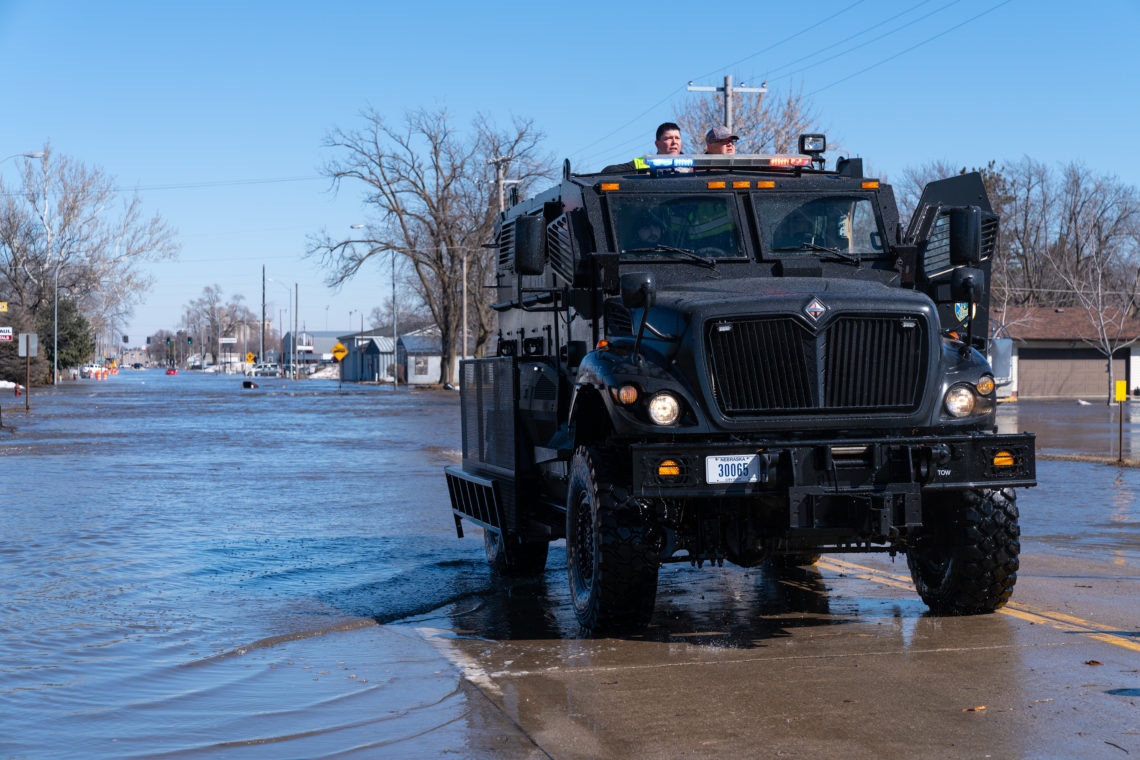
Historic Nebraska Flooding (Part 2 of 3)
After wreaking havoc in the heartland, the 2019 spring flooding is destined to stand the test of time in the record books.
“This was truly historic flooding. At every location I visited, longtime local residents commented that they ‘have never seen flooding this bad’ or ‘we’ve never had water over the road here before.’” Those words by Nebraska Department of Transportation District 8 Engineer Mark Kovar rang true for locations across a large part of north, central and eastern Nebraska impacted by the mid-March flooding.
More than six months later, after a Herculean effort by NDOT and its partners, the light at the end of the tunnel is brighter. During the aftermath, first responders and NDOT maintenance crews toiled around the clock to help clear the way and begin the recovery process. NDOT worked closely with its consulting and contracting partners to expedite the design and construction process to repair flood-damaged roads and bridges and restore mobility to the traveling public. Countless community organizations and volunteers pitched in to help with the massive recovery effort.
The residents of Fremont are grateful to those volunteers as the city of 25,000 literally became an island when all roads in and out were washed out or flooded for five days. Food and supplies were desperately needed as well as a road to get them there. Grocery store chain HyVee sent convoys of food and fuel along a roadway opened by the Nebraska State Patrol and National Guard. Volunteers offered private planes to transport people in or out of the area. Resource drops into Fremont were provided by Nebraska Air National Guard helicopters, including hay bales for cattle.
NDOT met the challenge of completing pavement and shoulder repairs along three miles of U.S. Highway 30, between Fremont east to Arlington, in just over 90 days.
Read additional stories from this state:
- County Bridge Match Program Provides Long-Term Impacts on Infrastructure
- Historic Nebraska Flooding – Ryde Transit and NDOT Maintenance Rescue Flood Victims (Part 3 of 3)
- Historic Nebraska Flooding (Part 1 of 3)
- Lincoln South Beltway Project
- NDOT Billboards Highlight Local Snowplow Drivers
- NDOT Reconstruction of 23rd Street in Columbus
- NDOT’s ABC Bridge Between Belden and Laurel Saves Motorists Time and Money
- NDOT’s Innovation Brings Truck Parking to Big Springs
- Revitalizing a Downtown With NDOT’s In Valentine Project
- State Oversight of CE Projects Provides Savings to Nebraskans


